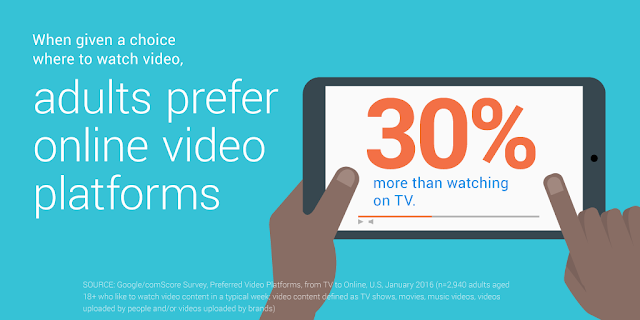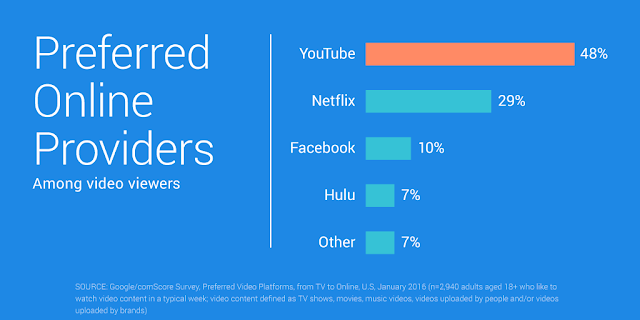By Celie O’Neil-Hart, June 23, 2016
6 Online Video Insights from comScore to Inform Your 2017 Media Plan
1. They Prefer Online Video Platforms to TV
The popularity of online video continues to grow. Today, when given a choice where to watch video, adults prefer online video platforms 30% more than watching on TV. Among millennials, that number jumps to 105%.
2. People Watching Long & Short-Form Video Prefer YouTube
Among viewers that watch both long and short-form content, 81% cite a preference for YouTube, making it the #1 choice. Compare that to the next-highest choice, TV, which earned just 56% of viewer votes.
3. They Choose YouTube Over Other Online Video Providers
YouTube also wins when compared to other online video providers. When asked to pick one online video platform, 48% of adults chose YouTube (vs. 29% for Netflix and 10% for Facebook):
4. Viewers Take Action on Video Ads, Especially on Short-Form Content
Online video has forever changed the media landscape, with more than half of all people regularly watching short-form videos (like branded content or viral videos), and two-thirds of millennials watching short-form weekly. That’s good news for brands: comScore’s research shows viewers are more likely to take action after watching ads on short-form content compared to traditional content (like movies and tv shows). Taking action could include sharing on social media, looking for more information about the brand advertised, recommending the brand or product, etc.
5. They Prefer YouTube for Branded Content and Videos
Uploaded by Users. We already heard that adults who watch short and long-form content prefer YouTube, but it’s also preferred across multiple content types. For example, 74% of adults prefer YouTube for videos uploaded by users and—critically—69% prefer YouTube for videos uploaded by brands, companies, and institutions.
6. YouTube Super-users May Surprise You
The final part of comScore’s research examined YouTube’s most passionate fans—“die hards”—and they aren’t who you might expect. Many are parents, live in a city, and 49% are women:
Posted by: Celie O’Neil-Hart, Product Marketing Manager, YouTube B2BHoward Blumenstein, Product Marketing Manager, Strategy and Insights, YouTube B2B
(71)



